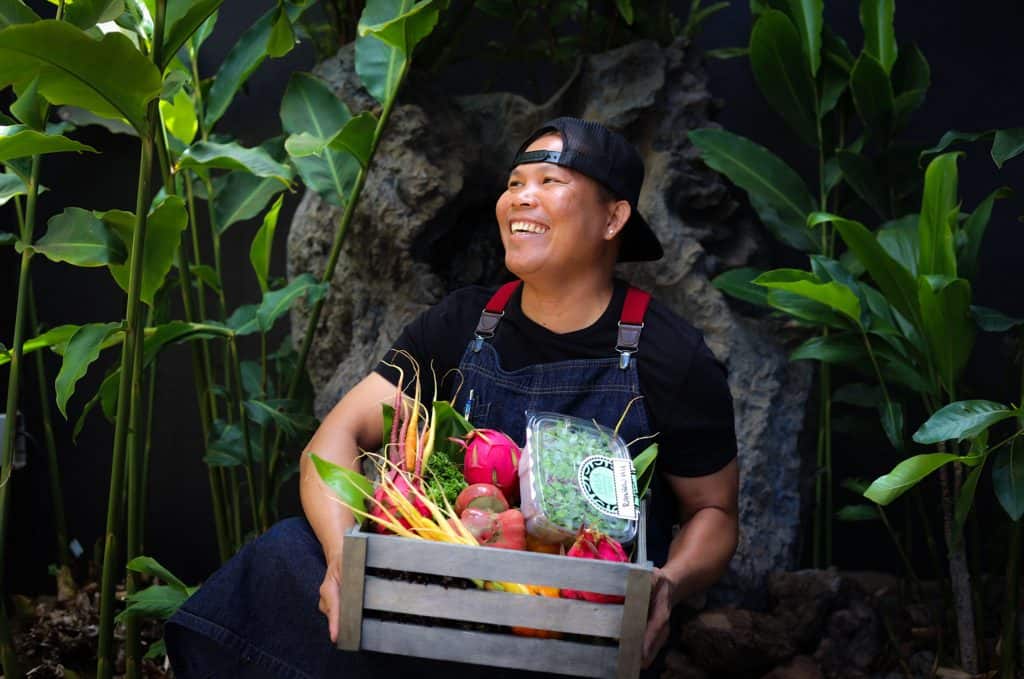Food brings people together and the meals we cook and share create the foundation for memories that last a lifetime. But the same food that bonds us as people also is part of the climate change puzzle.
Hawaiʻi imports about 85 percent of its food, and what you see on grocery store shelves has likely traveled thousands of miles to get here. This is not sustainable long-term, and the cost of overseas shipping — monetary and environmental — is high. The amount of fossil fuel needed to deliver sustenance for the entire state and its visitors is immeasurable, and the cargo ships that deliver this food can unintentionally strike marine life, killing many animals such as whales and dolphins and disturbing their natural behavioral patterns. For these reasons and more, it is important to adopt a “locavore” lifestyle.
The locavore movement is one of sustainability, and patronizing restaurants that support local food suppliers is a great way to make waves on an individual level. For example, the Seascape Restaurant at the Maui Ocean Center is the first venue on Maui to be platinum-certified by the Surfrider Foundation and is 100-percent sustainable. Executive chef Henry Tariga showcases produce grown on Hawaiʻi farms, grass-fed protein from island ranches, and fresh fish caught right in Māʻalaea Harbor. Among his ‘āina-friendly dishes is an Upcountry ‘Ulu Humus with Hawaiʻi Island taro and Kula carrots; Iʻa Chef’s Poke Bowl made with fresh fish, Maui onions, ‘alaea salt and house-crafted poke sauce; and chef Tariga’s personal favorite: a grilled secret-recipe veggie patty served with butter-glazed Hāna taro and Maui Nui avocado.

Beyond supporting restaurants like the Seascape, you also can source local ingredients to make meals at home — and it doesn’t have to be costly or difficult. For example, swap weekly grocery runs with a trip to the nearest farmer’s market, or investigate food co-ops in your area featuring items grown by farmers in your community. Buy your meat, poultry and fish from local butchers and fishermen, or even share what’s growing in your own back yard with your neighbors.
Small lifestyle modifications add up, and efforts you make today will inspire others to follow. Change won’t happen overnight, but if we can reduce our demand for imported food, we will be that much closer to a sustainable Hawaiʻi.
Immerse Yourself in our SEA-News featuring Hawaiʻi’s marine life, inspirational conservation, and glimpses behind-the-scenes.
